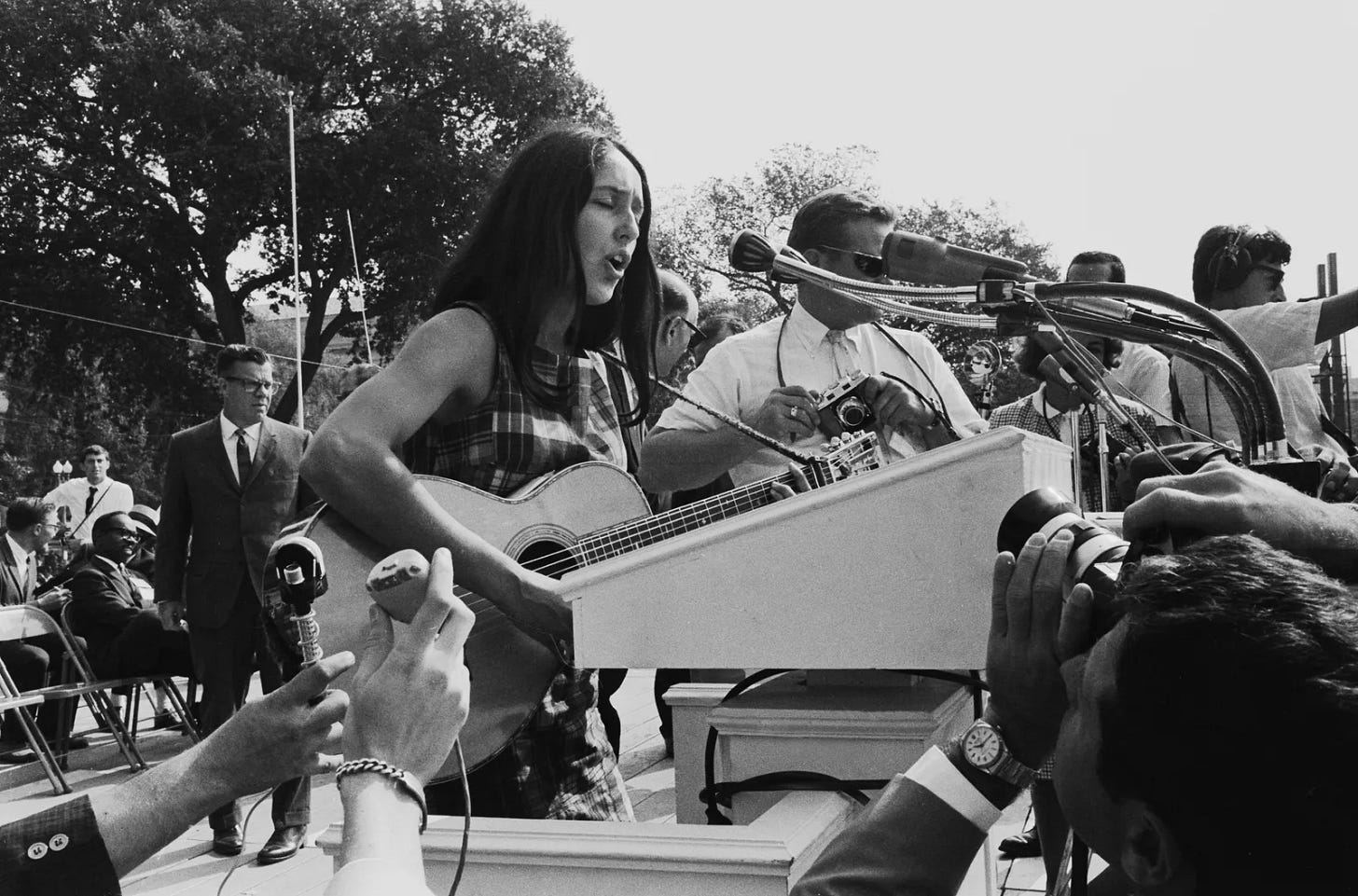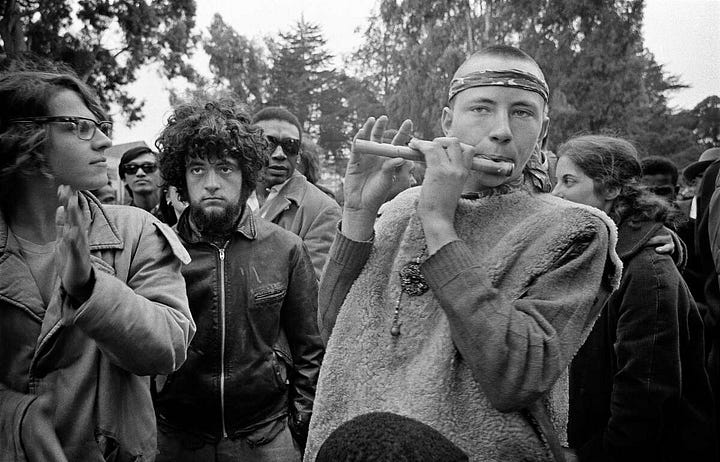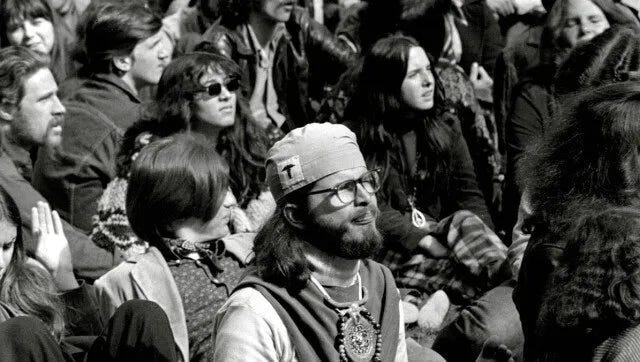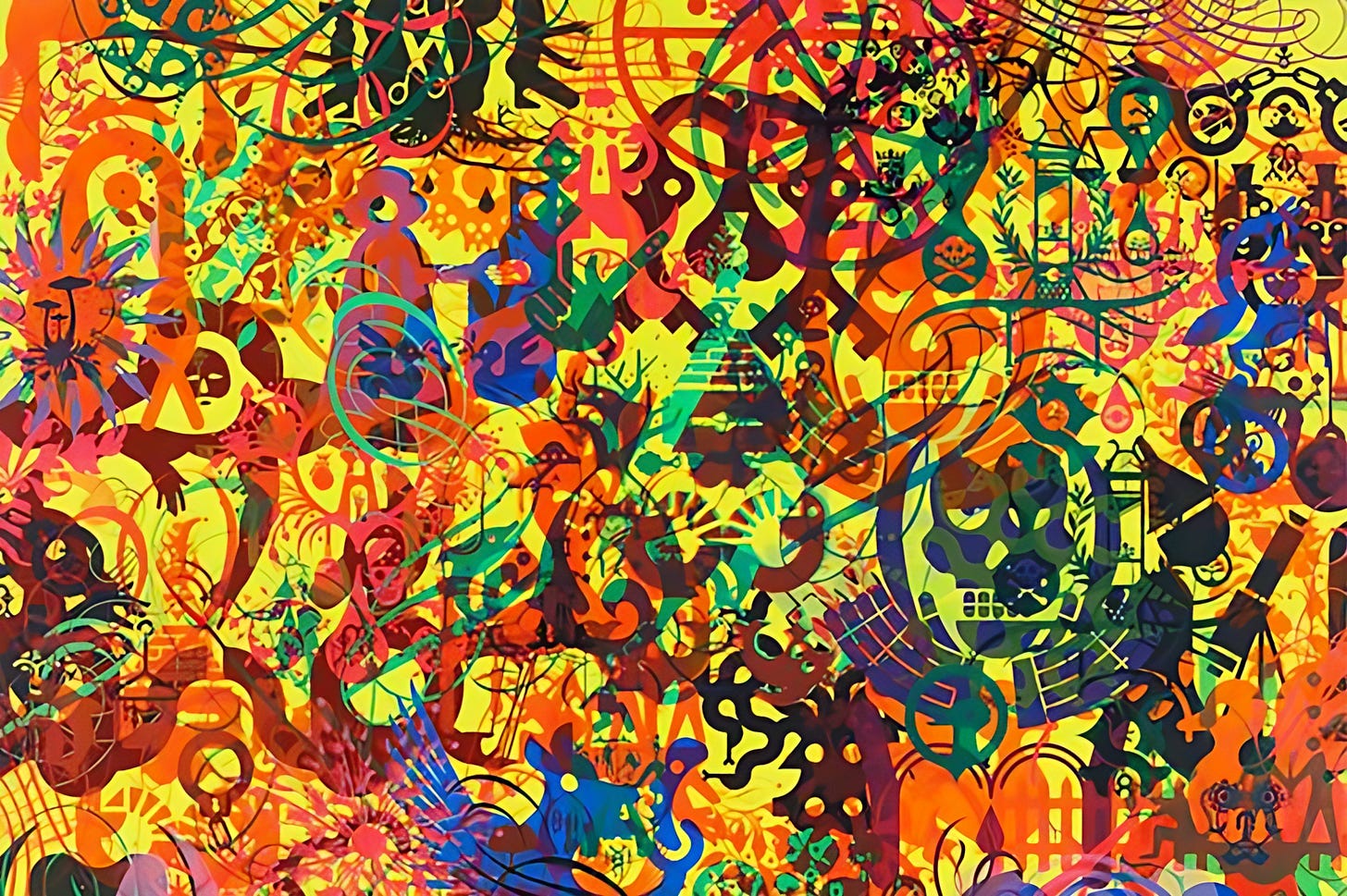The Psychedelic Revolution: Exploring the Impact of Drugs in Counterculture Movements in the USA (1960s-1980s)
An Expose by Mudasser Ali
The 1960s and 1970s were transformative decades in the United States, marked by a series of major counterculture movements that would redefine American society, politics, and culture. Central to these movements was the widespread use of drugs, particularly psychedelics, which played a significant role in shaping the counterculture's values, beliefs, and artistic expressions. This essay explores the profound impact of drugs and major counterculture movements in the USA between the 1960s and 1980s, tracing their historical roots, examining their social and political consequences, and evaluating their enduring legacy.
The 1960s saw the emergence of a counterculture movement characterized by a rejection of mainstream values and norms. Influenced by a growing disillusionment with government policies, such as the Vietnam War, civil rights issues, and conservative social values, many young Americans sought alternative lifestyles and ideologies. Drug use and abuse was prevalent throughout the United States in the 60s. Over-consumption of alcohol was commonplace, and 80 per cent of men smoked cigarettes [Braunstein and Doyle, 2002]. In 1965, doctors wrote 123 million prescriptions for benzodiazepines such as Valium, and 24 million for amphetamines. These drugs were highly addictive and deadly, yet they were legal and socially acceptable. LSD was also legal until 1966. If it had been just another drug that made people euphoric or numbed their anxiety, its social impact would have been minimal. Understanding the peculiar psychedelic effects that LSD (and its rarer cousins such as mescaline and psilocybin) has on the human mind is therefore crucial to understanding its social and cultural impact.
Unfortunately, many historians have stumbled at this first hurdle. By dismissing LSD use as simply ‘getting high’, historians such as Arthur Marwick fail to explain why LSD had such a huge cultural impact while other, stronger euphoriants such as cocaine did not [Marwick, 1998]. In his book The Sixties, Terry Anderson is equally mistaken when he writes that LSD was a ‘device used for coping’ with a ‘society that increasingly rejects humanitarian values’ [Anderson, 2007]. LSD, in other words, dulled the pain of being young in 1960s America. However, anyone who took LSD to get through a tough time in their lives or numb their depression was in for a rude shock. Alice Echols is closer to the mark when she argues that LSD was not simply about feeling good: ‘some trips were bad, but mostly spiritually cathartic, even transcendent’. For Echols, the emotional and spiritual intensity of the LSD experience was an ‘antidote to the adventure shortage’ that many young people felt growing up in post-war America. So what, then, is it like to ‘trip’ on LSD? Gerard DeGroot puts it well when he says that ‘LSD acts by temporarily dismissing the sentries guarding the gates of consciousness’, the ‘unprotected brain is invaded by a mob of unprocessed stimuli on which it is unable to impose logic’. For six to twelve hours, LSD transforms the tripper’s world into a very different and often indescribably surreal place. This can bring anything from ecstatic wonder to nightmarish terror, depending on the user’s mindset and setting. Colours appear brighter, small details become more noticeable, and intricate patterns overlay surfaces. The world warps and melts and objects morph into one another.
Bruce Hoffman was part of the initial wave of university students who sampled the LSD distributed by Harvard psychologist Timothy Leary. He recalls that on LSD ‘really some remarkable perceptual changes take place’, at times ‘you’d have the floor dissolve beneath you, the walls would be acting more like jello than masonry’. Feelings of deep connection with nature, the universe, and other people are commonplace. Jane DeGennaro remembers experiencing ‘religious ecstasy’ on her first trip in 1967, the year that she graduated from high school: ‘I was absolutely, completely 100 percent satisfied. I cannot express how fulfilled I was, how absolutely, totally happy’.
Harvard psychologist and acid guru Timothy Leary believed that the questioning of social norms that LSD inspired had the power to transform society. This was because LSD rearranged the ‘imprinting process’ in the human mind and allowed people to rethink things they had previously taken for granted. Ken Kesey, who described his early trips as ‘shell shattering ordeals’, similarly believed in the transformative power of acid: ‘the purpose of psychedelics is to learn the conditioned responses of people and then to prank them. That’s the only way to get people to ask questions, and until they ask questions they’re going to remain conditioned robots’. Years later, Kesey elaborated: ‘LSD lets you in on something. When you’re tripping, the idea of race 44 Burgmann Journal III (2014) disappears; the idea of sex disappears; you don’t even know what species you are sometimes. And I don’t know of anybody who hasn’t come back from that being more humane, more thoughtful, more understanding’. Dissident poet Allen Ginsberg agreed, saying ‘technology has produced a chemical which catalyses a consciousness which finds the entire civilization leading up to that pill absurd’.
In his 1972 study of communes, psychiatrist Ross Speck praised psychedelics as ‘a sacrament, a religious and aesthetic expansion and renewal’ that allowed ‘a rapid restructuring of human social values, cavalues, capable of saving mankind’ [Speck et al., 1972]. LSD inspired many youths that they could escape the establishment’s ‘reality’. That they could ‘drop out’ of a sick American society and create their own collective experience at concerts, on campus, and in communes. After taking LSD, Anne Waldman realised that ‘the darkness was someone else’s evil version of reality, not reality itself. Nothing was that solid or insurmountable. We were changed forever because we were experiencing these inspiring truths’.
Some trippers found the social norms of the world that they returned to stranger than the warped world of acid. Bruce Hofmann recalls that after his first trip ‘when you reappeared on campus, you felt like you had re-entered the historical past that was still alive’. Not surprisingly, the ‘establishment’ was less than thrilled by this widespread, ‘drug-induced’ questioning of beliefs and traditions. At the 1966 Congressional hearings into LSD, psychiatrist Stanley Cohen testified that ‘we have seen something which is most alarming, more alarming than death in a way. And that is the loss of cultural values, the loss of feeling of right and wrong, good and bad. These people lead a valueless life, without motivation, without ambition . . . they are decultured, lost to society, lost to themselves’. In 1967, a government official deemed the ‘anti-social’ effects of LSD ‘the greatest threat facing the country today’
The Vietnam War served as a pivotal catalyst for protest and activism, particularly among the younger generation. However, it was just one facet of the burgeoning Counterculture movement. Music emerged as its primary cultural expression, with Rock and Folk genres taking centerstage. This rebellion against the status quo was accompanied by the widespread use of drugs, particularly marijuana, LSD, and psilocybin mushrooms, which were seen as a means to explore new consciousness and challenge conventional thinking.
The anti-Vietnam War movement, civil rights activism, and feminist struggles were all deeply intertwined with countercultural ideals. The use of drugs was often seen as a form of protest against the establishment and the war machine. Activists and protestors turned to drugs as a means of coping with the stress and trauma of the times and as a symbol of their rejection of mainstream values.
There were people weren’t into drugs per say. Joan Baez's music was a rallying cry for the counterculture. Her soulful, ethereal voice and socially conscious lyrics resonated deeply with the ideals of the era. Her songs often addressed civil rights, nonviolence, and anti-war sentiments, capturing the zeitgeist of the time. Baez was not only a performer; she was an activist who used her music as a tool for social change. She performed at countless protests and rallies, including the 1963 March on Washington for Jobs and Freedom, where Dr. Martin Luther King Jr. delivered his iconic "I Have a Dream" speech.

Joan Baez's views on drugs represented a unique and somewhat conservative perspective within the counterculture movement. While she aligned herself with the broader social and political ideals of the era, she took a cautious approach to drug use. Her advocacy for nonviolence and civil rights was unwavering, and she believed that drug use could detract from the movement's goals. This stance did not, however, diminish her influence or her ability to connect with the counterculture generation.

The rebellion against the status quo was accompanied by the widespread use of drugs, particularly marijuana, LSD, and psilocybin mushrooms, which were seen as a means to explore new consciousness and challenge conventional thinking. The counterculture of the 1960s and 1970s was marked by a widespread mantra of experimentation. For many young Americans, taking part in substances was more than just recreational indulgences; they were gateways to expanded consciousness and alternative ways of perceiving the world. Psychedelic experiences were seen as a means to break free from the constraints of traditional thinking and explore the depths of human consciousness. As such, drugs became inseparable from the music scene that was driving the counterculture forward. Bob Dylan and the Beatles often referenced their own drug experiences in their work, reflecting the broader cultural fascination with altered states of consciousness.

One of the defining features of the counterculture movement was the fascination with psychedelics. LSD, in particular, gained immense popularity due to its potential for altering perception, consciousness, and reality itself. Proponents argued that psychedelics offered a pathway to expanded consciousness and a deeper understanding of the self and the universe. Figures like Timothy Leary, a psychologist and advocate of LSD, famously promoted the idea of "turning on, tuning in, and dropping out," encouraging individuals to explore the inner realms of their minds through psychedelic experiences.
The impact of these substances on the counterculture cannot be overstated. Artists, musicians, and writers, such as Ken Kesey, Allen Ginsberg, and the Beatles, incorporated psychedelic experiences into their work, shaping the cultural landscape of the era. Music festivals like Woodstock became epicenters of counterculture, bringing together thousands of like-minded individuals to celebrate peace, love, and music while often under the influence of mind-altering substances.
One of the most notable counterculture events with political undertones was the Summer of Love in 1967. Thousands of young people converged in San Francisco's Haight-Ashbury district, advocating for peace and love while experimenting with drugs. While this period was marked by idealism and optimism, it also highlighted the dangers of drug abuse and addiction.
As the counterculture movement gained momentum, the government responded with increasing hostility. The Controlled Substances Act of 1970 classified many psychedelics, including LSD, as Schedule I drugs, making them illegal. Law enforcement agencies cracked down on drug use, leading to the arrest and incarceration of many counterculture figures.
Furthermore, the excesses and negative consequences of drug use, such as addiction and mental health issues, began to cast a shadow over the counterculture movement. The idealism of the 1960s gradually gave way to the disillusionment of the 1970s. The infamous Manson Family murders in 1969, in which Charles Manson and his followers committed brutal murders while under the influence of drugs, shocked the nation and further tarnished the image of the counterculture.
The tension between those who saw drugs as a means of enlightenment and those who viewed them as a societal menace was a defining feature of this era, ultimately adding complexity to the narrative of the counterculture movement. Nevertheless, the role of drugs as a catalyst for social change and artistic expression during this period remains an indelible part of its history.


The Psychedelic Art movement is mainly associated with the late 1960s counterculture and the wake of increasing recreational use of ‘psychedelic’ drugs that produced colourful hallucinations. The movement was centered in San Francisco and flourished from about 1966 to 1972. LSD’s most obvious impact on the counterculture was its influence on the symbols and fashions of the movement. Reflecting the effects of LSD, the symbols and fashions of the counterculture were brightly coloured, intricately patterned, and deliberately strange. Instead of breaking typographic ‘rules’, the Psychedelic Art movement set out to reverse them. Instead of delivering clear messages, psychedelic posters advertising rock’n’roll concerts and other music events often had to be deciphered by audiences. The main principle of psychedelic posters was not to deliver messages as succinctly and efficiently as possible, but rather, to engage the viewers for as long as possible. The psychedelic style was quickly adopted by the growing hippie subculture, and employed in various domains of hippie life.
Psychedelic text, which increasingly appeared on everything from posters to shop-fronts, had a warped and melted appearance. Swirling patterns in brightly coloured tie-dyed clothing recalled LSD’s kaleidoscopic closed-eye visuals. At the forefront of the counterculture, author Ken Kesey (One Flew Over the Cuckoo’s Nest) and his acid-fuelled friends, the ‘Merry Pranksters’, travelled the country in a multi-coloured Harvester bus.
LSD users’ desire to reflect the strangeness of their drug-induced state through bizarre fashion and behaviour spread quickly. Bruce Hoffman recalls that at New York’s 1967 Great Easter Be-In ‘everyone was stoned out of their minds on grass or mescaline or acid or all of the above’ and dressed in ‘outrageous costumes, Day-Glo paints on the skin, people handing out daffodils to policemen and businessmen’ [Hoffman, 2001]. At a 1967 peace march in Washington DC, Norman Mailer observed ‘buckskins, top hats, ponchos, army surplus jackets, turbans, capes, even an unhorsed knight who stalked about in the weight of real armour’ [Bromell, 2000].

There is a historical consensus that rock music was central to the counterculture [Farber, 1994]. But many historians refuse to acknowledge the huge impact that drugs, and particularly LSD, had on 1960s rock. Brick’s 228 page book The Age of Contradictions focuses on rock music and the counterculture in great depth but features zero references to ‘LSD’, and just two passing references to ‘psychedelics’. Dickstein’s Gates of Eden, meanwhile, celebrates ground-breaking albums such as Jefferson Airplane’s Surrealistic Pillow, and The Beatles’ Sgt. Pepper’s Lonely Hearts Club Band without discussing drugs at all. The lyrics of counterculture musicians such as Jimi Hendrix, Jefferson Airplane and The Beatles are full of thinly (if at all) veiled references to LSD. Hendrix’s debut album title asked Are You Experienced?, and the album cover’s warped photograph, yellow and purple colouring, and psychedelic text made it obvious what he was talking about. In their hit song White Rabbit, Jefferson Airplane famously advised their listeners to ‘remember what the dormouse said’ and ‘feed your head’. The Beatles, meanwhile, sang of ‘tangerine trees’, ‘marmalade skies’ and ‘Lucy in the Sky with Diamonds’.

In addition to the lyrics, LSD also greatly influenced the sound and format of sixties rock. Artists used electronics to create strange, drawn-out, warping sounds that reflected the effects of LSD. The echoed, rising crescendo of Jefferson Airplane’s White Rabbit, for example, was designed to mirror psychedelic sensory distortions. The depth of the psychedelic experience inspired artists to create increasingly layered and complex music. While The Beatles’ first album took less than 10 hours to record, Sgt. Pepper’s took over 700. Standard 3-minute songs were ill suited to the long, flowing LSD experience. Instead, psychedelic rock bands such as the Grateful Dead played 30-minute songs that flowed smoothly into one another.
‘Acid rock’ groups were also quick to embrace the electric guitar. ‘Plugging in’ to electrics mirrored the ‘monumental stimulus’ and ‘high voltage charge’ provided by psychedelics. Grateful Dead guitarist Phil Lesch recalled that ‘you can hear it all. That’s what electronics do—they amplify the overtones to a degree never thought possible in an acoustic instrument’.
Despite the crackdown on drugs and the decline of the counterculture movement by the late 1970s, its legacy endured. Many of the ideas and values associated with the counterculture, such as environmentalism, LGBTQ+ rights, and the pursuit of personal freedom, continued to shape American society. The music, art, and literature of the counterculture era remain influential and iconic to this day.
In recent years, there has been a resurgence of interest in psychedelics for therapeutic and medical purposes. Research into the potential benefits of substances like LSD and psilocybin has gained momentum, with promising results in treating conditions such as depression, anxiety, and PTSD. This rekindled interest in psychedelics reflects a more nuanced view of these substances, moving beyond the stigmatization of the past.
The impact of drugs and major counterculture movements in the USA between the 1960s and 1980s was profound and multifaceted. While drugs were central to the counterculture's ethos of exploration and rebellion, they also carried risks and contributed to the movement's eventual decline. Nevertheless, the counterculture era left an indelible mark on American society, influencing politics, art, music, and social values. The legacy of this era continues to shape the cultural landscape and inspire new generations to question the status quo and seek alternative paths to understanding and change.
with files form Art Lark







